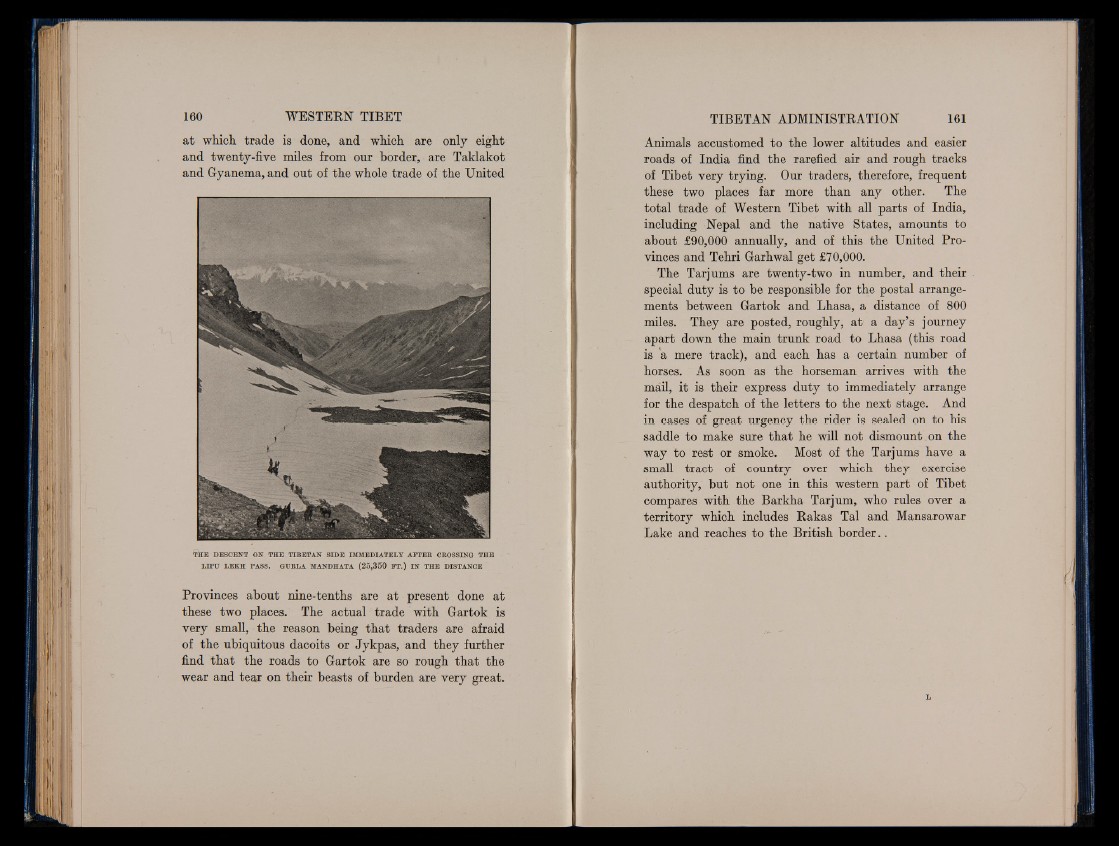
at which trade is done, and which are only eight
and twenty-five miles from our border, are Taklakot
and Gyanema, and out of the whole trade of the United
THE DESCENT ON THE TIBETAN SIDE IMMEDIATELY AFTER CROSSING THE
IIPU LEKH PASS. GURLA MANDHATA (25,350 FT.) IN THE DISTANCE
Provinces about nine-tenths are at present done at
these two places. The actual trade with Gartok is
very small, the reason being that traders are afraid
of the ubiquitous dacoits or Jykpas, and they further
find that the roads to Gartok are so rough that the
wear and tear on their beasts of burden are very great.
Animals accustomed to the lower altitudes and easier
roads of India find the rarefied air and rough tracks
of Tibet very trying. Our traders, therefore, frequent
these two places far more than any other. The
total trade of Western Tibet with all parts of India,
including Nepal and the native States, amounts to
about £90,000 annually, and of this the United Provinces
and Tehri Garhwal get £70,000.
The Tarj urns are twenty-two in number, and their
special duty is to be responsible for the postal arrangements
between Gartok and Lhasa, a distance of 800
miles. They are posted, roughly, at a day’s journey
apart down the main trunk road to Lhasa (this road
is a mere track), and each has a certain number of
horses. As soon as the horseman arrives with the
mail, it is their express duty to immediately arrange
for the despatch of the letters to the next stage. And
in cases of great urgency the rider is sealed on to his
saddle to make sure that he will not dismount,on the
way to rest or smoke. Most of the Tar j urns have a
small tract of country over which they exercise
authority, but not one in this western part of Tibet
compares with the Barkha Tarjum, who rules over a
territory which includes Rakas Tal and Mansarowar
Lake and reaches to the British border..